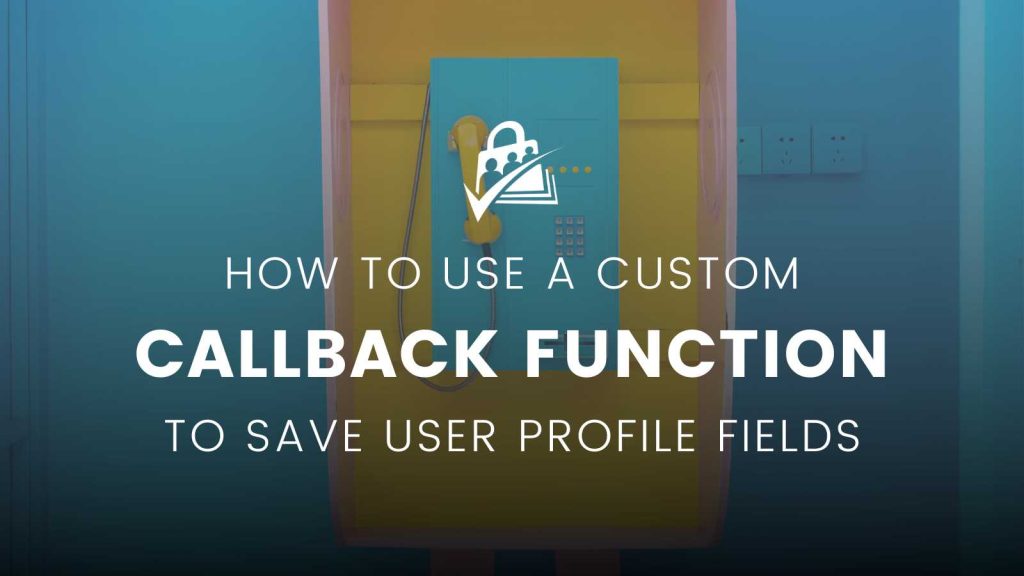User Fields is a robust feature in Paid Memberships Pro to create custom profile fields for your membership site. This post covers a lesser known feature of that Add On: the field’s custom save_function. You can use a custom callback function for any field to modify how and where the field’s value is saved.

Table of contents
Saving User Fields With a Custom Callback Function
Every user field can be extended with a custom save_function. This callback function opens up a whole range of possibilities that you or your developer may incorporate to extend how a field data is processed, such as:
- Format field input data before saving to the database.
- Perform server-side data verification such as validate a member’s location, age, qualifications, and more.
- Save the field input to any database table in your WordPress site, not just the default location in usermeta.
Using the save_function Custom Callback
Custom callback functions for a field require that you do two things:
- Write the custom function.
- Add the custom function to the field array in your custom user fields code. The
save_functionfield attribute accepts a string value of the callback function’s name.
'save_function' => 'my_custom_callback_function'
The save function is attached to a specific user field you create either with the User Fields Settings page or via custom code. Here are two examples of adding a save_function to a user field.
Recipe #1: Create User Field and Save Function in Custom Code
Here is a basic example of setting a callback function with the save_function option on line 17.
Recipe #2: Filter a User Field Created in Settings to Add a Save Function
For this example, the user field would have already been created on the Memberships > Settings > User Fields screen in the WordPress admin.
This code extends that field to add your custom save_function. Update the field_name on line 19 for your user field name.
Save Function Example: Capitalize the Input Value Before Saving
In this practical example, we add a custom field to collect “Pet Name” for our Must Love Dogs demo site. Since name is a proper noun, we want to make sure our pet’s name is properly capitalized before saving it to the database. Here are the steps:
- Create a text input field that collects the pet’s name.
- Create a custom function that capitalizes each word in a string.
- Add the
save_functionoption to our field calling our custom function to process the field handling.
Here’s an example of using this approach to create a custom save function to store more information for a Digital Signature-type field.
Adding the Recipe to Your Website
You can add this recipe to your site by creating a custom plugin or using the Code Snippets plugin available for free in the WordPress repository. Read this companion article for step-by-step directions on either method.
Writing the exact custom function to save your fields requires advanced WordPress and PHP development experience. This example is a fairly simple application of the power of a custom callback function but demonstrates the range of possibilities for how form inputs are handled.
I have personally found this custom callback to be the PMPro User Fields API superhero secret power, and I hope you find as much joy as I do from it. Remember to always sanitize your data before saving it to the database.


